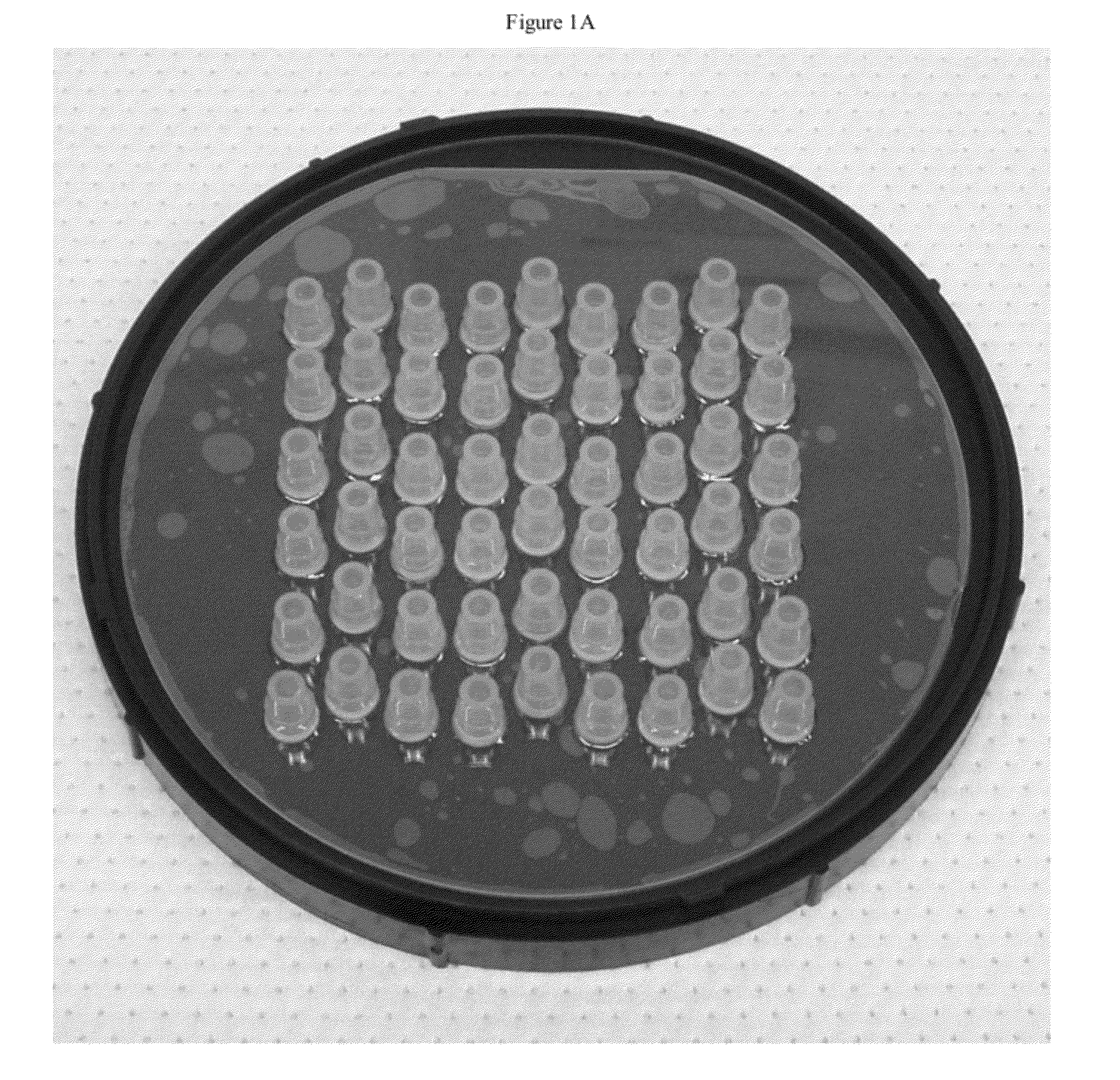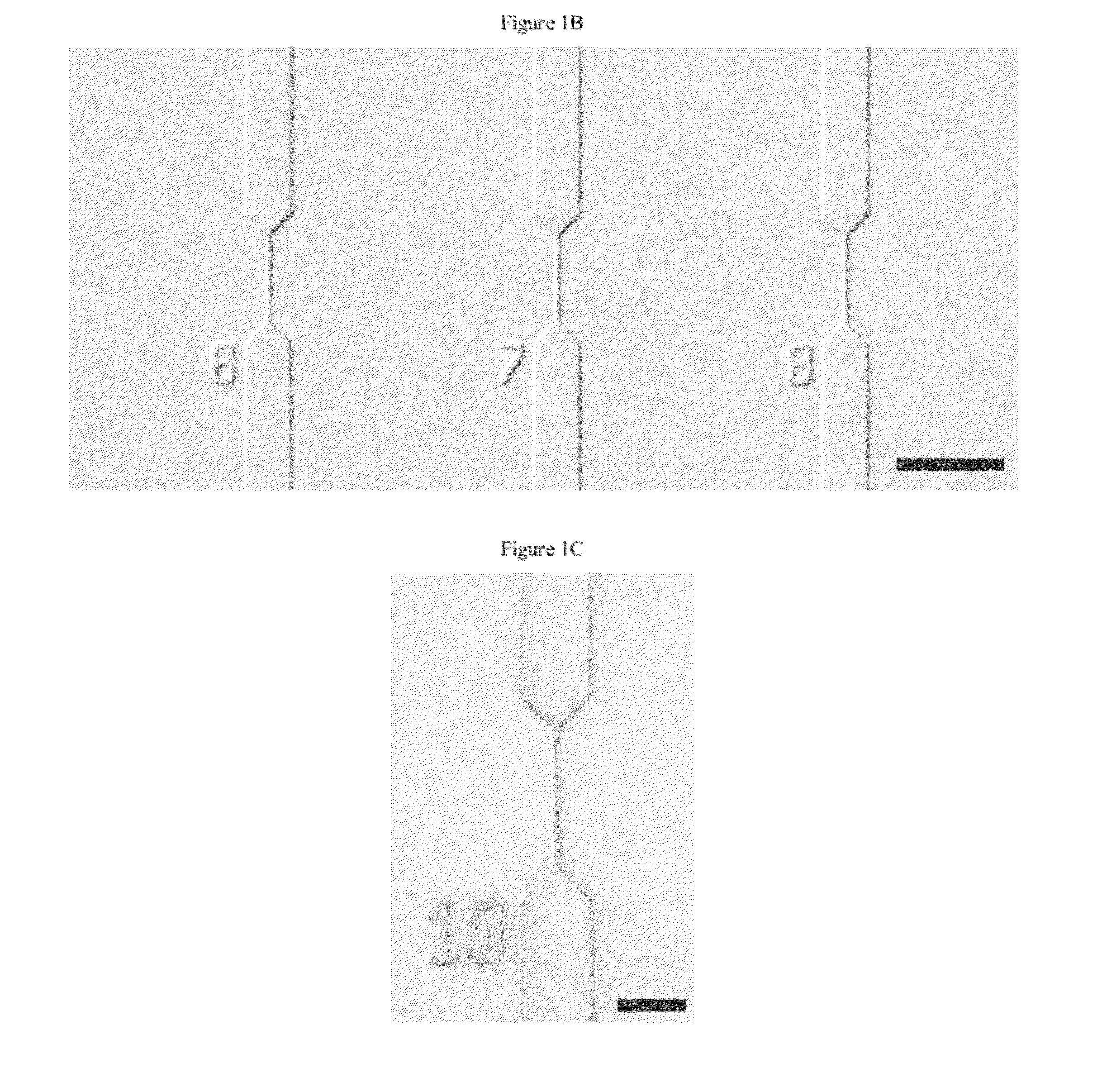Device and Methods for Epigenetic Analysis
a technology of epigenetic analysis and devices, applied in the field of devices and methods for epigenetic analysis, can solve the problems of imposing significant limitations on analysis throughput and sample quantity, suffering from two major limitations, and being incapable of assessing epigenetic changes in vanishing quantities, etc., to achieve high-throughput implementation, rapid data collection, and high detection system bandwidth
- Summary
- Abstract
- Description
- Claims
- Application Information
AI Technical Summary
Benefits of technology
Problems solved by technology
Method used
Image
Examples
example 1
A Nanofluidic Platform for Single Molecule Analysis
[0190]One strategy for high throughput analysis of single molecules of methylated DNA and chromatin can entail time-resolved detection and spectral identification of fluorescent labels bound to individual molecules containing epigenetic marks of interest. We flowed and detected DNA and chromatin in a solution confined within a nanofluidic channel. These channels reduce the optical excitation volume for fluorescent analysis, thus enabling us to interrogate individual molecules in solutions of relatively high concentration. The nanofluidic channels were fabricated in a fused silica substrate using photolithography and reactive ion etching. FIG. 1C a shows a single nanofluidic channel made by this process with cross-sectional dimensions of approximately 250 nm wide by 500 nm deep. We formed 27 separate fluidic channel arrays, each with 16 parallel channels, on a 100 mm diameter wafer. Each array also had access ports with a reservoir a...
example 2
Nucleosome Detection on Native Chromatin
[0192]This experiment demonstrates that chromatin can be directed through a nanofluidic channel and remain intact, having nucleosomes remain attached on the DNA. For this test we used chromatin extracted from HeLa cells bearing a transgene expressing an H2B-GFP (green fluorescent protein) fusion protein. H2B-GFP incorporated into nucleosomes allowed the chromatin to fluoresce. We prepared native chromatin from the cells using standard methods, treating isolated nuclei with micrococcal nuclease (MNase) and then extracting the soluble native chromatin using a high salt buffer. We next labeled the DNA within our chromatin preparations with TOTO-3, a red nucleic acid stain that is spectrally distinct from GFP. We wanted to analyze this dual labeled chromatin for two reasons. First, it permitted us to determine whether chromatin remained intact during nanofluidic electrokinetic flow, which is essential for any successful application of this method ...
example 3
Detection of DNA Methylation
[0198]Probes that have been used in epigenomic analysis were used to detect an epigenetic mark on our nanofluidic platform. We analyzed DNA methylation and used MBD1 as our probe, which has been shown to bind methylated DNA specifically. Our test material was HindIII digested lambda DNA from a methylation deficient host, which we left unmethylated, or methylated in vitro using SssI DNA methyltransferase. SssI can methylate all 3,113 CpGs in the 48.5 kbp genome. We verified the effectiveness of the methylation reactions by digesting the DNA with the methylation sensitive restriction enzyme HpaI (FIG. 25). Both DNA samples were stained with TOTO-3 and incubated with MBD1, which we labeled with Alexa Fluor 488. Alexa Fluor 488 is spectrally similar to GFP. The Alexa Fluor 488 labeled MBD1 retained its specificity for methylated DNA (FIG. 26). To facilitate optimum binding to methylated DNA, we added a molar excess of MBD1 to the stained DNA. We found that di...
PUM
| Property | Measurement | Unit |
|---|---|---|
| Time | aaaaa | aaaaa |
| Volume | aaaaa | aaaaa |
| Volume | aaaaa | aaaaa |
Abstract
Description
Claims
Application Information
 Login to View More
Login to View More - R&D
- Intellectual Property
- Life Sciences
- Materials
- Tech Scout
- Unparalleled Data Quality
- Higher Quality Content
- 60% Fewer Hallucinations
Browse by: Latest US Patents, China's latest patents, Technical Efficacy Thesaurus, Application Domain, Technology Topic, Popular Technical Reports.
© 2025 PatSnap. All rights reserved.Legal|Privacy policy|Modern Slavery Act Transparency Statement|Sitemap|About US| Contact US: help@patsnap.com



